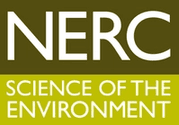GardenSafe: Reducing harm from contaminated soil
What's in my soil?
After EPA scientists have assessed your garden soil, you will be emailed a report containing the screening results from your garden soil samples.
The sections below walk through how you can reduce harm from contaminated soil.
Identifying contamination is important because it can cause harm to human and environmental health.
There are three components to contamination that may cause harm:
The source of contamination (e.g., lead paint)
The pathway through which it could spread (e.g., ingestion of contaminated soil particles or uptake of contaminants into home grown veggies)
The receptor the contamination could impact (e.g., people consuming home grown veggies).

Guidelines to reduce harm to human health from contamination consider each of these pathways and provide a concentration above which harm to the receptor (people) may occur for a given contaminant.
Actions taken to remove or reduce risk from contaminated soil should address the source and the pathway, so that harm to the receptor is reduced.
In the example above, by safely removing the lead paint and old oil drums (source), and replacing the topsoil in and around the veggie patch (pathway), the risk to the family and their chickens (receptor) from eating home-grown veggies and working in the garden is reduced.
If your GardenSafe screening results exceed the guideline provided, then further investigation may be required. Reasonably practicable measures to remove or reduce the presence of, or exposure to, that contaminant should be considered to reduce potential risk of adverse human or environmental health effects. This may include growing veggies in pots or raised beds with new soil from a reputable provider.
Only a qualified medical professional can advise how a contaminant could impact an individual’s health. Please see your doctor if you have health concerns about soil contamination.
Reasonably practicable measures to reduce soil contamination
The actions taken to remove or reduce soil contamination should be proportional to the level of contamination identified, if any.
Examples of remediation strategies include:
Excavate the contaminated soil - For higher contaminant concentrations, consider removing the top 30 cm of soil and for disposal at an appropriately licenced landfill. Place an impervious fabric to stop the mixing of old and new soil. Add a thick layer of clean, purchased soil from a reputable provider on the top.
Grow veggies in a raised bed - Construct a raised bed using safe materials. Fill the bed with layers of organic matter, compost, cardboard, and clean purchased soil from a reputable provider. Do not use treated timber, old painted timber, or tyres to build your raised garden bed.
Mulching and covering - Cover the contaminated soil with a layer of clean soil then mulch or pave the area. This reduces the generation of contaminated dust and restricts contact between people and the soil. Only grow ornamental plants in these areas, rather than edible produce.
Build a designated play space for children - Like the raised bed, build a garden bed using safe materials and fill with clean, purchased soil from a reputable provider. Use this as a play and learning space for children to get their hands dirty and try growing their own veggies. Remember to wash your hands after playing in the soil.
Removing or reducing soil contamination may require a combination of strategies. Seek advice from an experienced environmental professional and consider further testing before commencing remediation. Always dispose of waste, including contaminated soil, at an appropriately licenced landfill.
Keep in mind that good gardening practices like thoroughly your washing hands and veggies, and leaving dirty shoes at the door, go a long way in reducing your exposure to soil and contaminants. Even when working with clean soil, these practices should be followed.
View Sustainability Victoria’s do’s and dont's list for more suggestions.
Limitations and further testing
GardenSafe provides screening level data for common contaminants in garden soil. While we endeavour to provide reliable results using innovative techniques, soil testing from a NATA accredited facility will return higher data accuracy.
There may be other contaminants in your garden soil that are not assessed by this program, including asbestos and pesticides. An environmental consultant can conduct a site investigation to assess other contaminants in your soil and advise suitable remediation strategies. If high contaminant concentrations are identified in your soil by GardenSafe then further testing is recommended.
Exploring other contaminants
The GardenSafe testing suite is selected because:
They may be present in garden soil at concentrations that could impact human or environmental health, including when consumed.
They may impact how plants grow in the soil.
You can engage an environmental consultant if you are concerned about other contaminants in your garden or if your GardenSafe results exceed guideline concentrations. They will be able to conduct a detailed site assessment, testing via a NATA accredited laboratory facility, and advise strategies to reduce harm to comply with your General Environmental Duty.
If further testing of your soil exceeds certain guideline values, you may also have Duty to Manage. The Duty to Manage requires you to appropriately manage and minimise the risk of harm caused by those contaminants. Your response to managing contaminated land should be appropriate and proportionate to the level of contamination identified, if any. Read more about our approach to managing contaminated land.
Victoria Unearthed
Victoria Unearthed is an online mapping tool that captures information on land and groundwater contamination. Sites that have received an EPA clean-up notice or pollution abatement notice, sites with restricted groundwater use, and locations of current and historic landfills are captured on the map.
Data collected from GardenSafe will not be shared with Victoria Unearthed, however you can use this tool to learn more about pollution sources in your area. For more guidance from EPA Victoria, visit Contaminated land and your health.
Map My Environment
Trace element screening data collected by GardenSafe is displayed on the interactive platform: Map My Environment. The online tool combines work from other citizen science projects to improve environmental data accessibility and empower community to make informed decisions about their local environment.
You can use this online tool to explore our data and compare your screening results to other locations in the area.
To protect your privacy, technical controls, including a double jitter, are applied to the data, preventing personal information being used to spatially identify individuals or sample locations. View EPA's privacy policy for more information.
Jump to Map My Environment's global map, change the sample type to ‘soil’, and zoom to your suburb to get started.




ABOUT US
The 360 Dust Analysis program is a global research initiative to collect and analyse data on contaminants of concern that may be harmful to human health in homes and gardens..
CONTACT US
dustsafe@mq.edu.au
gardensafe@epa.vic.gov.au
ee.dustsafe@northumbria.ac.uk
LOCATIONS
Macquarie University, NSW, Australia.
Environment Protection Authority, VIC, Australia.
Northumbria University, Newcastle, United Kingdom.
IUPUI, Indianapolis, United States.